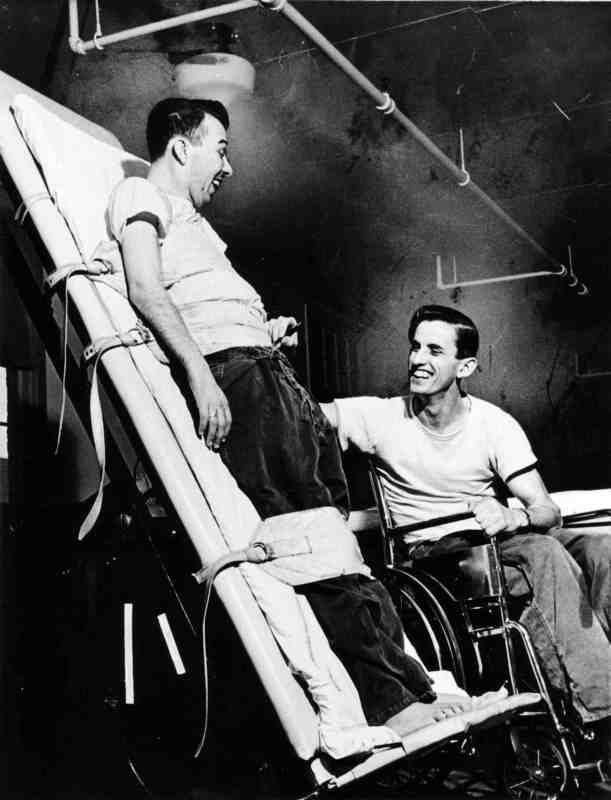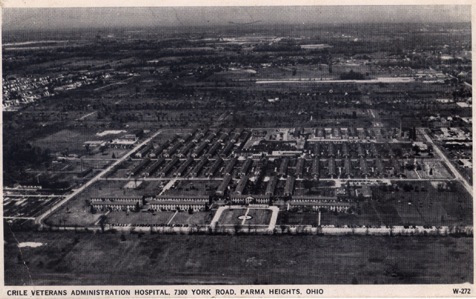Crile Military Hospital

Rustling trees, wildlife, ponds, fountains, and students hustling between their cars and classrooms. The first impressions of Cuyahoga Community College's Western Campus would, most likely, not include hints of its significant military history. Yet, wounded soldiers, German prisoners of war, and an entire military "city" were once the occupants inhabiting the property at 11000 Pleasant Valley Road in Parma. The site's rich history began when Crile General Hospital was dedicated on Easter Sunday 1944.
Built as a "temporary" facility, Crile grew to be more than a hospital. Its barracks-type structures were in almost continuous use for thirty years and served a variety of purposes. The Crile complex provided medical care to veterans of two wars, held 250 German POWs during World War II, and housed a Nike anti-aircraft missile base during the Cold War. It became home to Tri-C's Western Campus in 1966.
Crile General Hospital was built by the U.S. Army and named in honor of George Washington Crile (1864-1943), an internationally renowned surgeon and founder of the Cleveland Clinic. Crile served in both the Spanish American War and World War I and was a pioneer in military medicine, leading research and treatment of shock, blood transfusion, and blood banking.
Crile General Hospital actually received its first patient weeks before the official opening. In early March 1944, Richard Currier, a severely wounded POW, arrived as the lone patient in a facility with nearly 2,000 beds, 7 miles of corridors, and a staff of 1,000. Other patients arrived a few weeks later. In December 1944 the first detachment of German POWs arrived from Camp Perry, Ohio and remained until the end of 1945. Repatriated to Germany at the end of the war, many returned to the United States and subsequently became citizens.
After the end of World War II, Crile General Hospital became Crile Veterans Hospital in June 1946. Crile General Hospital had treated and healed over 15,000 patients by this time. The capacity of Crile was reduced to 1,000 beds, but was reorganized for clinical study and teaching. Physical therapy, occupational therapy, and corrective therapy were additional aspects of the Veterans Hospital's program.
The Crile Hospital in Parma closed in 1964, relocating to a new facility in University Circle (now the Louis Stokes VA Medical Center). In the fall of 1966, however, life returned to its empty ward and hallways as Cuyahoga Community College's newly created Western Campus enrolled 3,000 students. In 1975, the barracks were torn down and a new campus rose on the site of the old hospital to meet the community's expanding educational needs.
The site's military legacy has not been forgotten, however. Dedicated to preserving Cuyahoga Community College Western Campus's rich history, the Crile Archives, housed at the Tri-C Western Campus, is home to artifacts, documents, photographs, and books chronicling combat medicine and veterans' experiences from World War I to the present.
Images









